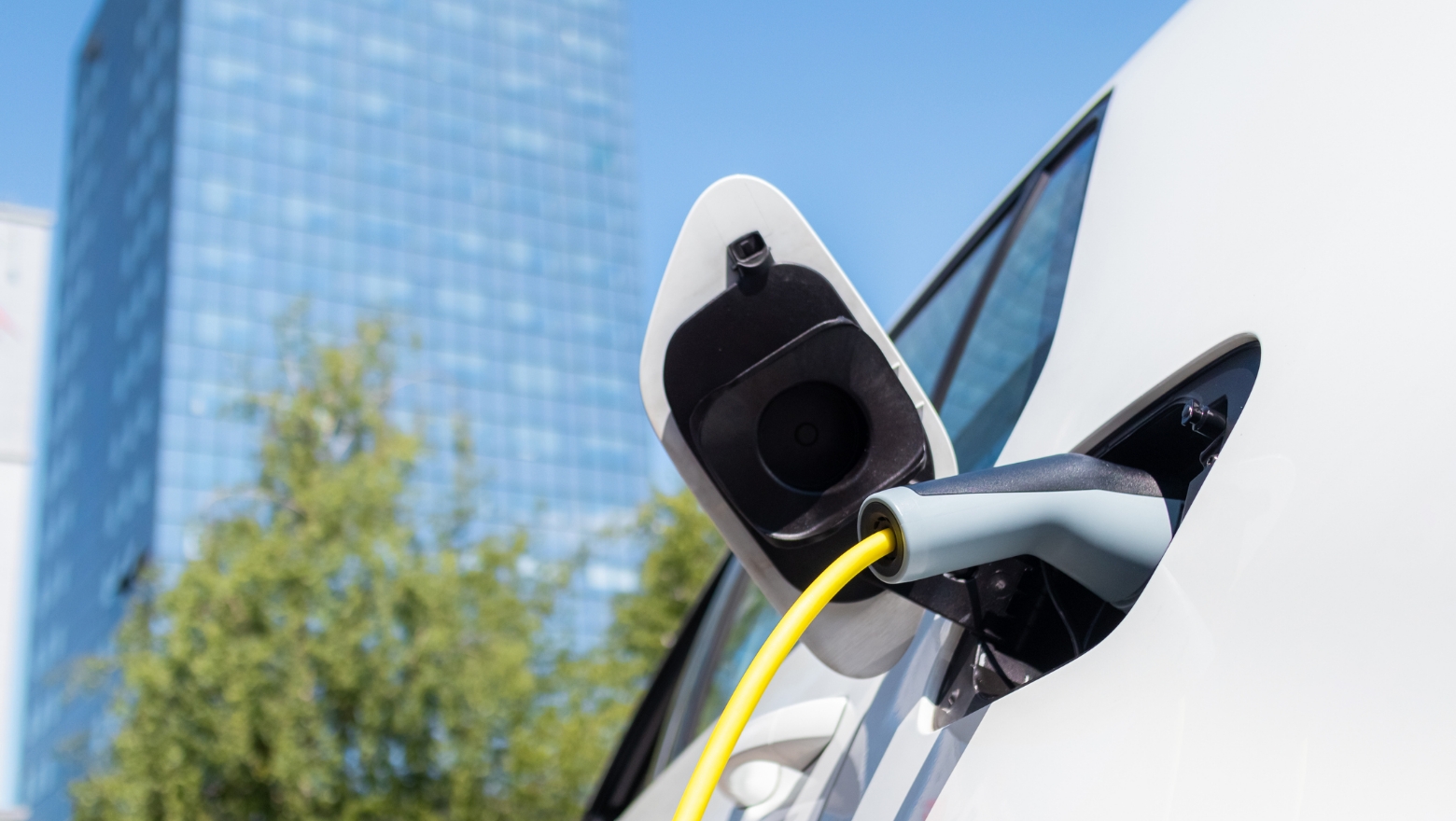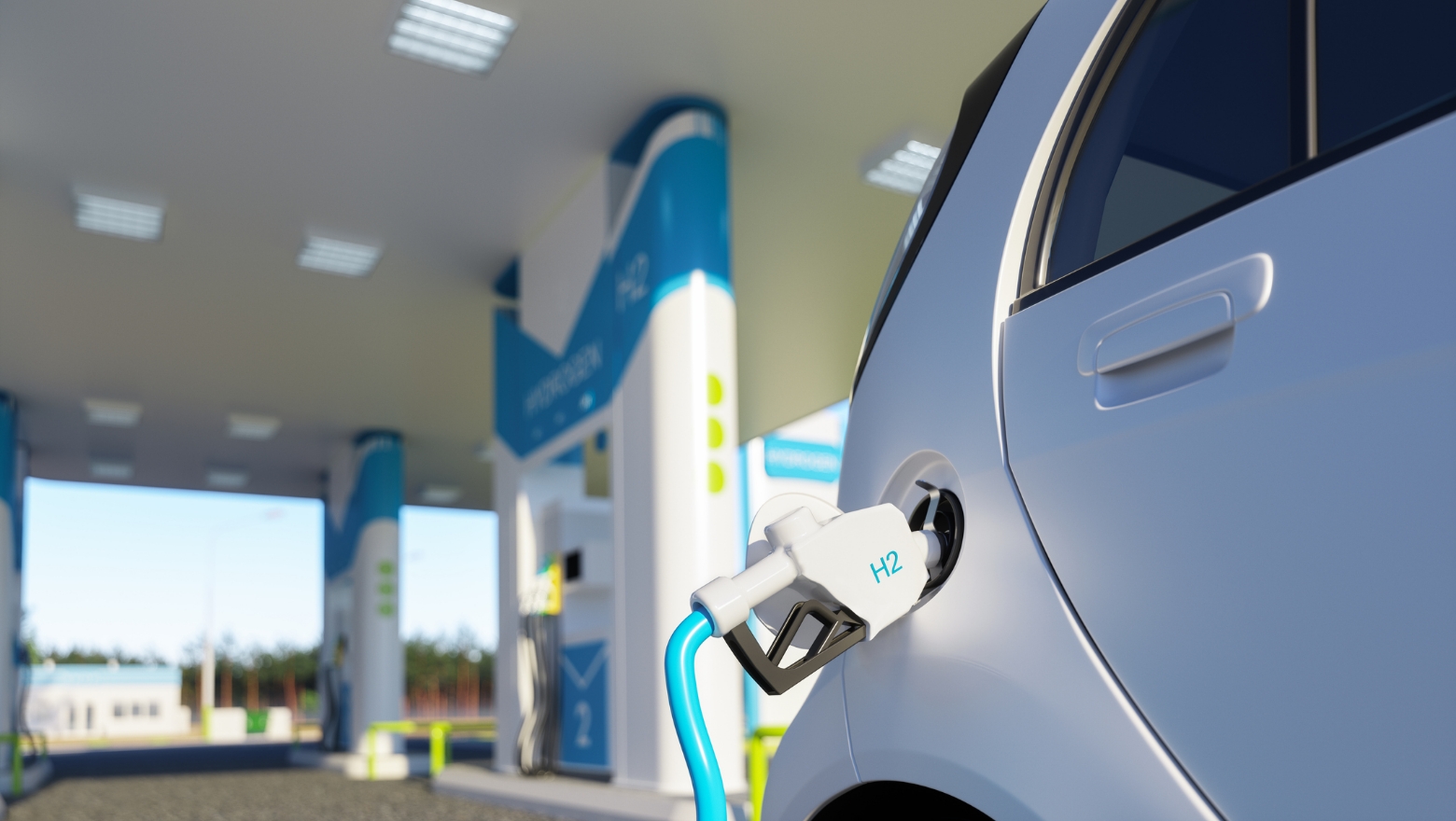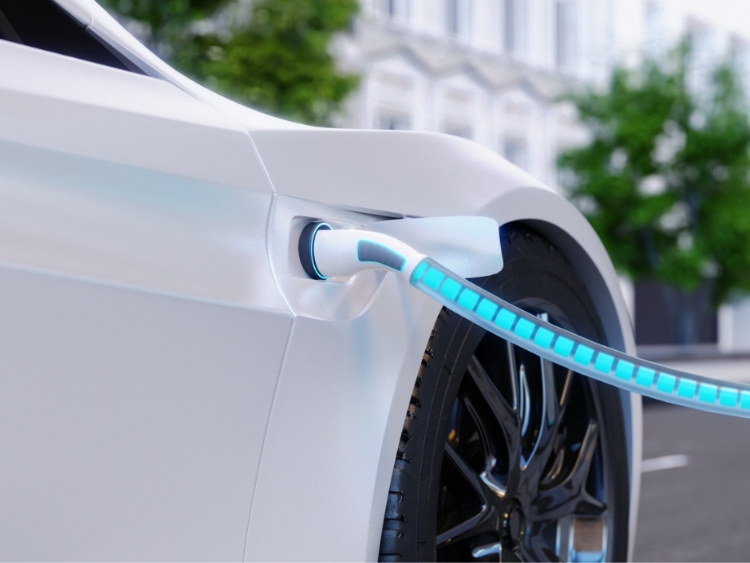
What does CASE stand for?
The term CASE was derived from the initial letters of Connected, Autonomous, Shared & Services, and Electrification.
Connected: Enabling the IoT in automobiles
Connected refers to using various communication devices and automobile sensors to connect to external devices and services via the internet. By becoming IoT (Internet of Things) terminals on the road, automobiles can transmit and receive information on vehicles and road conditions while driving, automatically report breakdowns and traffic accidents, track vehicles in the event of theft, and access entertainment information. Being connected through advanced communication technology with high speed, high capacity, and low latency is an indispensable technological foundation for the achievement of automated driving.
Autonomous: The five levels of driver support and automated driving
In 2014, the Society of Automotive Engineers (SAE International) released what the industry commonly refers to as the SAE Levels of Driving Automation™ (*1), which has since become the industry standard definition for driving automation. In the standard, autonomous driving technologies are classified according to their degree of automation, from Level 0 with no driving automation or driving support, to Level 1 and Level 2 with driving assistance, to Level 5 with fully automated driving.
[Levels of driver support
]
Automatic driving functions are available under specific conditions (advanced functionality). Level 2 includes driving modes such as overtaking a slower car if there is one on expressways and automatically performing a divided merge on expressways.
Automatic driving function under specific conditions. Functionality examples include automatically following the vehicle in front while maintaining the same lane (ACC with LKAS).
[Levels of automation]
Shared & Services: From ownership to sharing
This category refers to car sharing, in which vehicles are jointly owned and used, and ride-sharing, in which other people share a ride in a car with an ordinary driver and use it as a means of transportation while sharing the cost of gasoline and other expenses.
Ride-sharing has been gaining popularity for the past decade, reaching an estimated USD 76.48 billion in 2020(*5). While lesser known, car sharing is now also expanding globally. A recent report by Global Market Insights(*6) has found that the global market size "surpassed 2 billion USD in 2020." Additionally, it is anticipated to grow at over 20% CAGR from 2021 to 2027.
Electrification: Supporting electric vehicles EVs
The shift from Internal Combustion Engines (ICE) to electric vehicles EVs, which run on a motor powered by electric energy, has been accelerating worldwide, spurred by concerns about global environmental issues.
Hybrid vehicles, which combine a gasoline engine and a motor, are popular in Japan. Still, the market environment has also changed with announcements by electronics companies supporting EV development, such as Sony announcing its entry into the electric vehicle market at CES in January 2022. Automobile manufacturers are also now showing a greater focus on developing electric vehicles.
*1 SAE Levels of Driving Automation™ Refined for Clarity and International Audience
*2 “Japan: Honda to Begin Sales of All-New N-ONE Mini-Vehicle.” MENA Report, Albawaba (London) Ltd., Nov. 2020.
*3 What Is Adaptive Cruise Control? (caranddriver.com)
*4 Honda launches world's first level 3 self-driving car - Nikkei Asia
*5 Ride Sharing Market Size, Share, Growth & Forecast [2028] (fortunebusinessinsights.com)
*6 Car Sharing Market Trends 2021 - Global Statistics Report 2027 (gminsights.com)
The evolution of Connected, Autonomous, and Electrification will be the basis for achieving Shared & Services
CASE first came to attention in September 2016 at the Paris Motor Show 2016. It was triggered by Daimler's launch of CASE as a pillar of its medium- to long-term strategy.
In his presentation, Dieter Zetsche, then Chairman of the Board of Daimler AG and General Manager of Mercedes-Benz Cars, demonstrated how the intelligent linking of these four technology trends would bring about a revolutionary change in the value of the automobile.
Why is CASE attracting attention?
CASE is attracting attention because of the following changes in the environment surrounding the automotive industry:
Environmental regulations implemented to combat climate change (e.g., decarbonization without fossil fuels, reduction of carbon dioxide emissions)
Declining birthrates and an aging population that needs new modes of independent mobility
The decline in purchasing power of young people driving a decrease in their ability to purchase vehicles for themselves
Increased need to prevent traffic accidents through automation
Aggravating economic instability, disparity issues, and changing values encourage transitioning from ownership to utilization
In particular, climate change countermeasures are an urgent issue on a global scale, and the global trend toward regulating the sale of gasoline and diesel vehicles is accelerating, which is having a significant impact on the automotive industry.
Initiatives among automakers and parts suppliers to achieve CASE in mobility
Under these circumstances, cutting-edge R&D in various fields, such as AI (artificial intelligence), IoT, and automated driving, is essential for developing hardware and software to achieve CASE. However, cutting-edge R&D in various fields is not something automakers can tackle alone; it requires collaboration with companies that possess ICT and AI technologies.
Toyota Motor and SoftBank have established a joint venture and launched the MONET Consortium as a cross-industry organization aiming to achieve mobility innovation. In contrast, Nissan Motor and Renault have signed an exclusive agreement to develop an unmanned self-driving car service promulgated by Waymo, a subsidiary of Alphabet (Google's holding company).
A wide variety of collaborations are underway across the national, industry, and manufacturer boundaries, and this trend is expected to accelerate.
Technology development from material and auto parts manufacturers
To ensure their future success, both materials and automotive parts manufacturers must develop technologies to enable CASE. Specifically, new technologies are required to eliminate electromagnetic waves and improve sensor accuracy for high-speed, large-capacity communications, indispensable for the achievement of connected and autonomous vehicles with higher capacity, higher output, and power module thermal management.
The Mitsubishi Chemical Group is doing its part by developing innovative materials to enable CASE technologies. For example, creating sensors that can accurately identify and avoid obstacles is essential to achieve connected and autonomous technologies. Mitsubishi Chemical Group has developed a wavelength-selective heat-absorbing polycarbonate. By filtering the wavelengths that cause noise and transmitting only infrared light, the polycarbonate enhances the accuracy of optical sensors to identify obstacles.
Another essential element of autonomous driving is noise reduction in the onboard radar. To address this, MCG has developed electromagnetic-wave-absorbing polybutylene terephthalate resin that replaces the aluminum diecast used in conventional EMCs. This resin technology suppresses electromagnetic noise, enhances the sensitivity of onboard radar, improves designability, and reduces weight by up to 55%.
For IoT antennas necessary for communication, MCG offers a range of Laser Direct Sintering (LDS) compatible with LPKF's LDS technology in polycarbonate and high-performance polyamide materials. These materials feature the ability to form three-dimensional circuits on molded resin products by plating, thus enabling the miniaturization and weight reduction of antennas.
In addition, MCG offers mirror-coated metallic-tone molding, which utilizes a unique metallic tone coating technology that allows millimeter waves used for various sensors to penetrate through the coating on vehicle bodies, enabling the sensor functions to perform efficiently.
Meanwhile, Mitsubishi Chemical has developed a high heat-dissipation insulating resin sheet for EV power module thermal management, indispensable for electrification. MCG blends the resin sheet with proprietary BN filler, achieving high heat dissipation and insulation properties equivalent to silicon nitride substrates. This simplifies the module structure, enabling downsizing and weight reduction of the power module.
Highly functional materials support the achievement of CASE
The key to understanding CASE is the interaction of four technological trends. The technological evolution of connected, autonomous, and electrified vehicles will enable their diverse use, providing the foundation for Sharing & Services For example, suppose mobility services, such as automated community buses and mobile convenience stores using environmentally friendly electric vehicles, are achieved in depopulated areas. In that case, vehicles will become not just a means of transportation but an infrastructure with a new value that supports society. CASE technological trends will make this kind of social transformation possible.
These mobility trends are expected to continue to accelerate as our society advances. Accordingly, developing highly functional, advanced materials is expected to become increasingly important for automakers and parts manufacturers.



